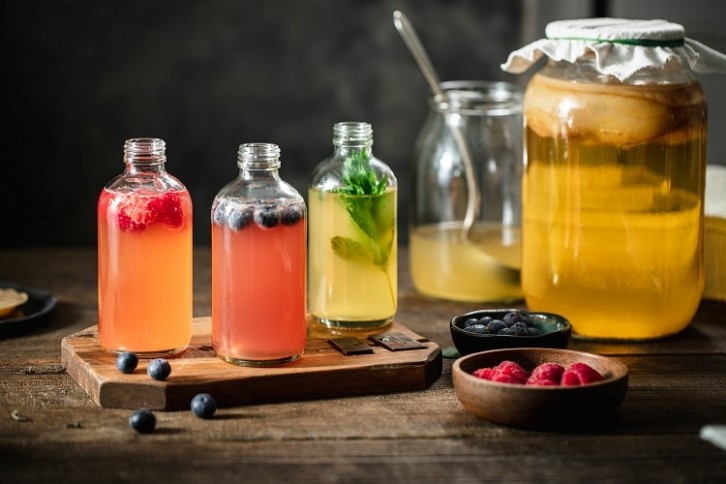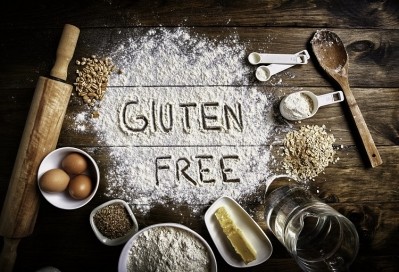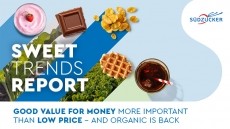Fermented foods and beverages find favour with consumers

If you’d asked people, even just five years ago, what fermented foods and beverages were, there’s a strong chance they wouldn’t have been able to tell you. But that has well and truly changed, as countries across Europe are embracing fermentation in all its forms, with kombucha, kefir and sourdough proving particular favourites amongst fans. In fact, such is the success of the fermented foods and beverages trend, that business intelligence platform, Statista, has valued the global market at almost 575 billion USD and estimates that that figure will rise to over 989 billion USD by 2032.
“Over the last few years, I have seen a lot of people increasing their intake of fermented foods,” Chloe Hall, founder of The Calm Gut Dietitian, told FoodNavigator.
So why are fermented foods and beverages so popular and how will this trend develop in the future?
Why are fermented foods and beverages so popular?
Fermented foods and beverages have gone from zero to hero in the food and beverage charts. But they’re certainly not new. In fact, if you’ve ever visited Germany, you’ll likely have eaten fermented food, in the form of sauerkraut (fermented cabbage), a national favourite. Labelled Germany’s ‘superfood’, sauerkraut has been a staple in the German diet since the early 1600s – does that make Germany an extremely early trendsetter...? Arguably yes! Because while countries across the globe have been fermenting foods for centuries, for many they had fallen from favour, particularly with the advent of refrigeration when fermentation for preservation was no longer required. And so it’s really only in recent years that fermentation has returned to popularity for many European consumers.
The modern fermented foods and beverages trend began to gain traction in 2018, with Julia Buech, food and drink analyst for Mintel, observing, “fermentation is currently experiencing a revival in the food and drinks industry.” However, that revival appears to have really taken flight during the global pandemic, when more was being understood about three key things: the gut microbiome, the importance of the gut microbiome in supporting the immune system, and the benefits of fermented foods and beverages to supporting the gut microbiome. You could say it was the perfect combination to really launch fermented foods into the stratosphere.
“Consumer understanding of gut health has grown significantly in recent years, and we attribute this to various factors," Reshma Patel, marketing manager at Yakult UK, told FoodNavigator. "While probiotics have been recognised globally for some time, it’s only relatively recently that scientific advancements have highlighted the profound impact of gut health on overall well-being. It extends way beyond digestion, with growing evidence revealing the interconnection of the body's major organs, with the gut at the centre of this intricate system. Another driving force has been a cultural shift towards preventive health measures rather than just focusing on cure. People are being increasingly proactive in maintaining their health, rather than waiting for diseases or illnesses to strike."

And fermented foods offer a huge amount in terms of health benefits.
“Fermented foods and drinks are some of the healthiest you can consume,” Freya Twigden, founder of kombucha brand Fix8 Kombucha and Fibe Prebiotic Soda, told FoodNavigator. “For example, sauerkraut can be healthier than just eating the cabbage alone. That’s because during fermentation, sugar is consumed by yeast and converted into healthy organic acids, b-vitamins and probiotics. These are bio-available for the body. There’s a great myth that Captain Cook kept his sailors healthy by feeding them sauerkraut (not just cabbage) compared to all the other ships, as it was higher in vitamin D and helped them swerve scurvy!”
Although dietitians warn against overconsumption of fermented foods and beverages.
“Enjoying fermented foods as part of a healthy balanced diet is great,” says Cole. “Eating them by the bucket load and expecting them to do miraculous things for your gut is not, and can actually cause side effects. These foods contain a lot of histamine and for those with underlying histamine intolerance having too much of them can cause whole body symptoms.”
So, what’s next for this powerful food trend?
How will the fermented food and beverage trend develop?
The fermented foods trend is continuing to grow and evolve, with brands regularly launching new products.
“There has been a marked increase in global patent activity related to fermented food and ingredients over the last decade,” says Neha Srivastava, senior patent analyst at Mintel.
One key progression in this trend is the influence of global travel.
“Fermented beverages exist across all cultures, so, the more cultures merge, and the more we travel, the more we learn,” says Twigden.
Another clear development within the fermented foods market is the development of precision fermentation, a process by which microorganisms are used to produce specific functional ingredients. And such is the interest in this that French food brand, Danone, recently announced its plans to partner with Michelin, DMC Technologies and Crédit Agricole to develop a platform to scale up precision fermentation operations.
Furthermore, as the gut health trend continues to dominate the food and beverage industry, it’s likely the fermented foods trend will continue to grow. It seems fermented foods and beverages are really only just getting started.
What are fermented foods and beverages?
Fermented foods and beverages are made by adding microorganisms, like bacteria or yeast, to a food source. For example, adding yeast to sweetened tea, triggers the fermentation process, creating kombucha.
The process of fermentation has been used for centuries however, it has recently gained popularity as a result of its links to gut health.
What is the gut microbiome?
Each of us has trillions of microbes or bacteria living in our gut. These are collectively referred to as the microbiome. The two most common species of helpful bacteria found in our gut microbiome are Lactobacillus and Bifidobacteria. Maintaining a healthy balance between the helpful (good) bacteria and the unhelpful (bad) bacteria is fundamental in supporting a healthy digestive system, with the gut now understood to be central to health, containing more than 70% of our immune system.



























